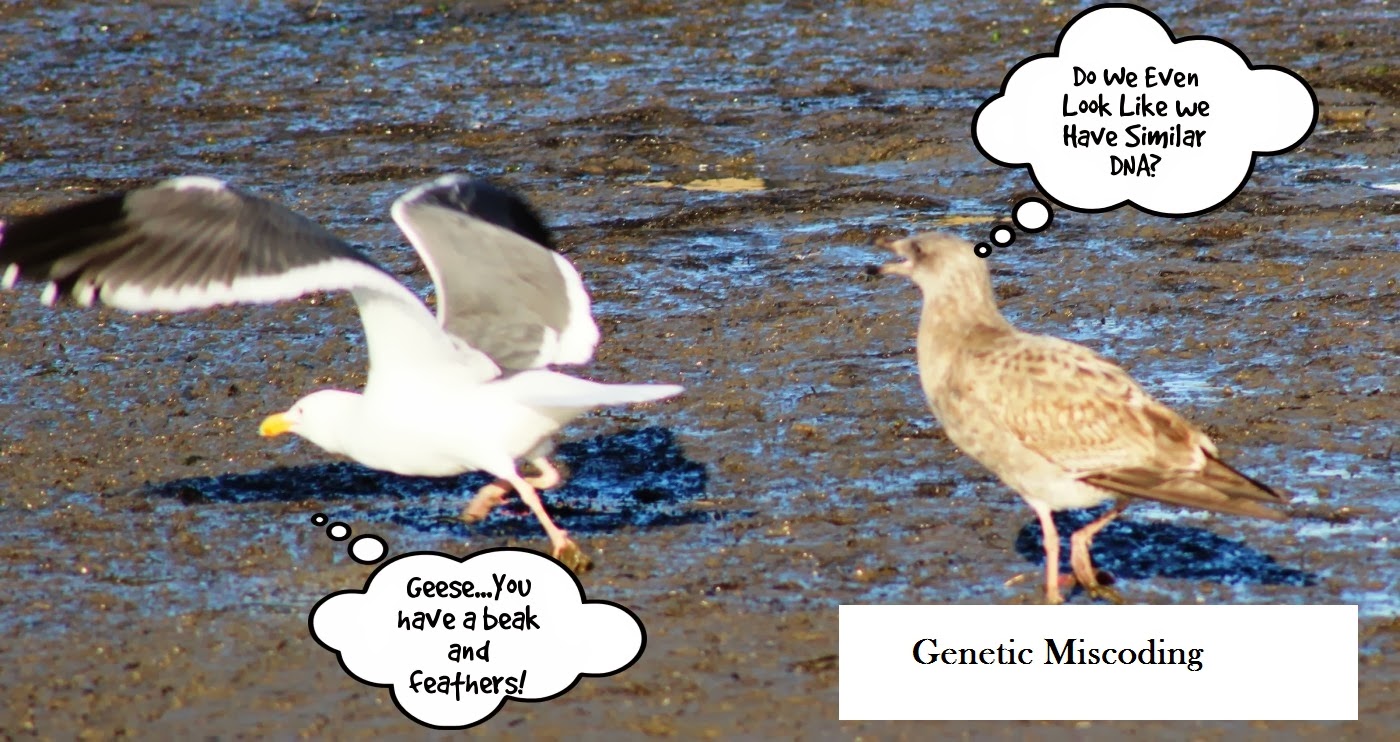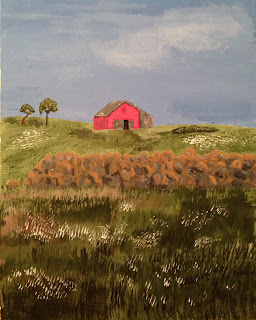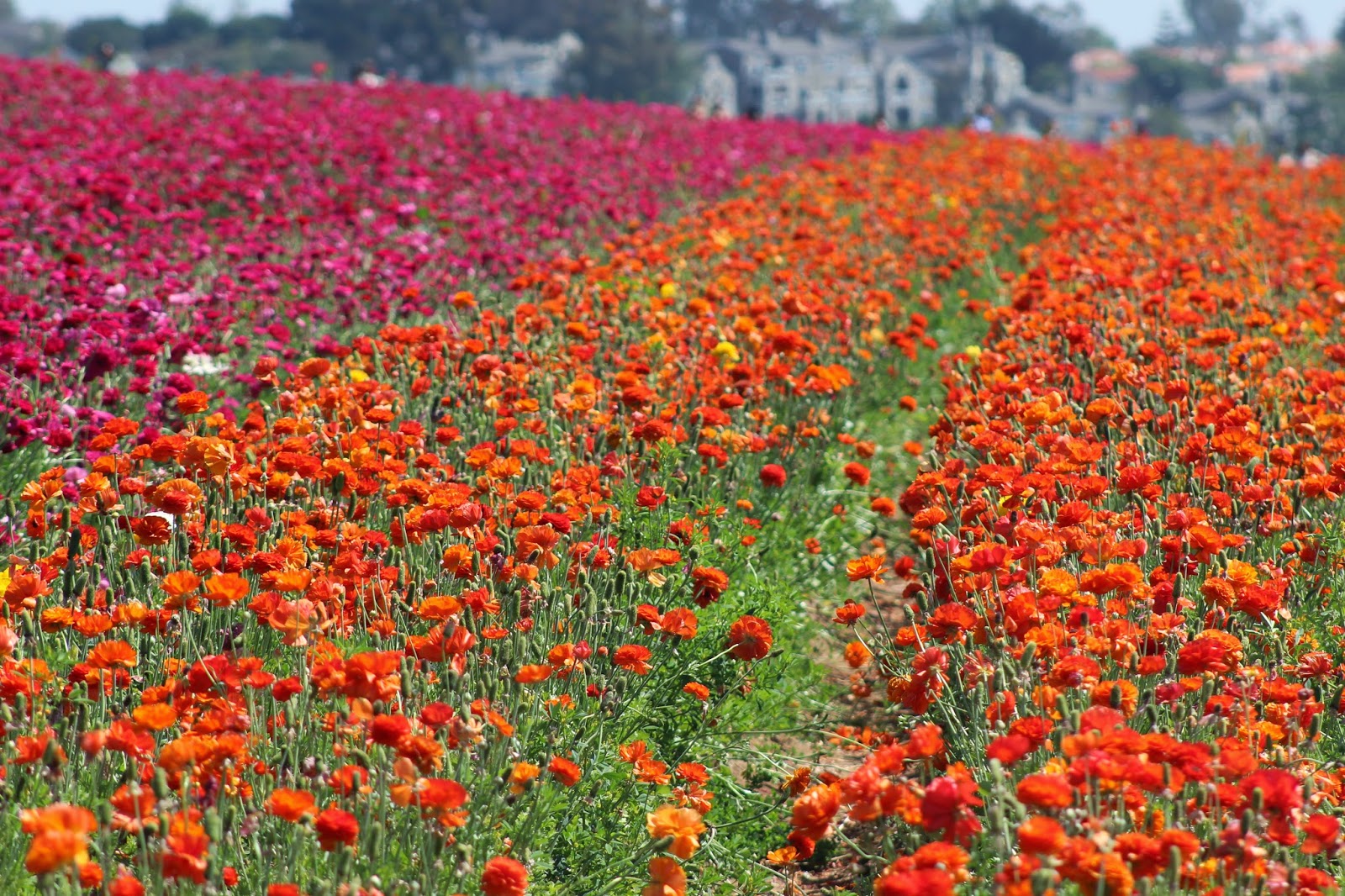Flowers are drawn with nature's artistic hand across a landscape canvas. With bright colors flowers offer something more than a beautiful landscape but a tantalizing feast for our eyes and food for our soul. There is something inherent in flowers that brighten our day and help us think about how beautiful the wild can really be.
Flowers are a powerful representation of emotion and beauty. They are so powerful that those who hold onto a bunch of flowers seem to have a positive aura about them. Consider a study of male and female hitchhikers holding onto flowers. Men holding flowers got a ride by both sexes more than either women with or without flowers (Gueguen, Meineri & Stefan, 2012).
Flowers seem to make us more approachable and provide a trait of aesthetic appreciation. Those that can find beauty in this world seem to carry with them traits that include empathy, kindness, and sensitivity. There is no doubt why artists, poets, and painters love flowers.
It is also beneficial to consider the stress and brain enhancements that come with flowers. According to research people who take a stroll in nature have higher brain functioning and lower levels of stress (As cited in Green, 2011). The same applies to those who look at pictures of flowers and destress from all of the days worries.
With all the benefits of flowers I am concerned that more people don't find them of interest. Putting a few pictures on your office or home wall will certainly allow for a more artistic feel to spruce up your environment while reducing stress levels. Go for a walk if you can or put some pictures of flowers on your office wall.
I engage in some hobby artistic photography and painting as one way to keep in touch with and study nature. The imagination this work entails offers cognitive flexibility and innovative creativity hard to find in other activities. If you are interested in purchasing a picture you may do so on the Creative Works page or you may buy related products like mugs or cell phone cases on Fine Art America.
Creative Works
Fine Art America
Gueguen, N. Meineri, Sebastien, Stefan, J. (2012). "Say it with Flowers"...to Female Drivers: Hitchhikers Holding Flowers and Driver Behavior. North American Journal of Psychology, 14 (3).
Green, J. (2011). Research Shows Nature Helps With Stress. Dirt. Retrieved http://dirt.asla.org/2011/09/08/research-shows-nature-helps-with-stress/
The blog discusses current affairs and development of national economic and social health through unique idea generation. Consider the blog a type of thought experiment where ideas are generated to be pondered but should never be considered definitive as a final conclusion. It is just a pathway to understanding and one may equally reject as accept ideas as theoretical dribble. New perspectives, new opportunities, for a new generation. “The price of freedom is eternal vigilance.”—Thomas Jefferson
Showing posts with label nature. Show all posts
Showing posts with label nature. Show all posts
Friday, April 17, 2015
Thursday, February 20, 2014
Elephants Show Empathy To Each Other
Asian elephants show empathy like humans, apes, dogs, and
certain birds. When members of the herd sense stress in another elephant they
make sounds, use their trunks and other touching actions to show they are supporting
and caring for the stressed member. This is the herd tendency of a species that
relies on each other for survival.
Researchers watched the elephants for some time to see how
they act and interact with each other. Stressors come from their environment
and can include anything from potential predators to mating partners. When an elephant becomes stressed they erect
their tails, flare their ears, and sometimes make other sounds and motions.
The behavior is part of their ability to protect each other
and keep order within their herd. When stress occurs other elephants rally
around to protect the stressed individual. This helps in ensuring mutual
protection among the members and developing a protective collective stance.
Likewise, elephants were known to celebrate births and mourn deaths.
As humans we often make the assumption that animals can’t
empathize with others. Other research has found that elephants can both
understand human actions as well as help along injured herd mates. The actions
suggest a collective intelligence to the animals and their ability to stay
together in the environment for mutual protection and survival.
Friday, January 3, 2014
Checking Out with DNA Barcodes
 |
| Looks are deceiving among gulls. Young ring-billed gulls have brown spots and can look different than adult gulls. Coding helps to determine if they are the same or different species to avoid mislabeling.Info |
DNA mapping of species is becoming a popular
practice due to its accuracy. Researchers have difficulty seeing small
differences among species that are similar and have moved to mapping chloroplast
DNA. (1).
The concept has been called DNA barcoding because each species comes with a
unique map that helps to denote their origins.
Researchers believe that the DNA bar coding trend
will likely help understand marine species and development (2).
Sometimes sea life is hard to discern from each other. At other times, species
found on the coast are decomposed and difficult to identify. By testing their
DNA they are able to find out what they are, where they came from, and the
school that is in the area.
Bird mapping is
already in process. Most bird species diverge by 9.54 % on average and inter-species are
different by around .29 % making them discernible from each other (3).
Gulls seem to mix up their DNA and are more difficult to measure. It is likely
that birds will be the first group to be fully mapped.
The advantages of DNA mapping are great. Many of
us assume that most of the world’s species are already in existence. This is a
false assumption as species change, merge, and adjust over time. As the
environment changes genetic variability and inter-breeding will create new
species that vary from their ancestors in unique ways. This is a necessity in
living in a moving and adjusting world where new adaptations are needed to
overcome challenges.
Monday, December 30, 2013
Call for Papers: GE-International Journal of Engineering Research
Paper Submission Date: 20th
January, 2014
Call for Submission Vol 2 Issue 1
FROM
Double Blind
FROM
Double Blind
GE-International Journal of Engineering
Research ISSN: 2321-1717
Indexed / Listed at: International ISSN Directory, Paris
Indexed / Listed at: International ISSN Directory, Paris
Submission
Research paper prepared in MS word template with double – column in single spaced typed pages should be submitted electronically as attachment at E-mail Id of Journal mentioned below. The manuscripts in all the subject areas are welcome. Moreover, submitted manuscript must not be previously accepted for publication elsewhere.
Place to submit research:
Research paper prepared in MS word template with double – column in single spaced typed pages should be submitted electronically as attachment at E-mail Id of Journal mentioned below. The manuscripts in all the subject areas are welcome. Moreover, submitted manuscript must not be previously accepted for publication elsewhere.
Place to submit research:
Last day of submission: 20th January,
2014
Thursday, June 13, 2013
Short Story: Dusk to Dusk, Ashes to Ashes
 |
| Painting by Dr. Murad Abel |
Short stories have the ability to spark the imagination and
lead the reader with a thought or concept to ponder. Each store is unique and
became popular over the 17th and 18th centuries from the
storytelling of the past. They made their way into magazines, books,
newspapers and other printed works. The short story is designed to quickly
entertain the reader while leaving a lasting impression.
Short short stories, or flash fiction, has a basic structure
such as the exposition (introduction), complication, climax and resolution. The
difficulty with such stories is that they are so short it is hard to build a
story with dynamic characters and therefore descriptions are generally brief
and artistic. It isn’t easy to write a clear store within a page or two.
Short stories are also known in China where they are called “smoke
long” which means they are finished in about the time you smoke a cigarette. Most
of the great writers like Ernest Hemingway and Edgar Allen Poe wrote a few
short stories. Some writers collected all of their short stories and put them into a book.
Title: Dusk to Dusk, Ashes to Ashes
The little barn on the hill has been barren for over a
generation with no one to claim it as home. Weeds have grown where bountiful
crops once stood, the paint is peeling, the door has long been broken by local thieves,
and the two-rut road has blended into a dandelion's paradise. Its neatness long transformed into the chaotic
order of nature. Horses, pigs, and cows were sold lifetimes ago after old man
Granger said his famous words, “dusk
to dusk, ashes to ashes, it is time for me to close my lashes.”
Nature moved in and claimed the grounds slowly by coaxing it
back to the place from which it came. Little trees have risen in the once plowed
fields while the fences have crumbled into ruble. It rested abandoned until little
Samuel, from just up the rocky road, claimed the old barn as a fort for his adventures,
hideouts, and as a haven from the day’s events. The walls may be lined with the
droppings of birds, the ceiling full off abandoned bee hives, and the dirt floor
sprinkled with the footprints of country critters but it contained within its
dampness the treasures of another life.
Manual mowers, pots, tools, hammers, rusty nails, birthing
calipers and a host of other abandoned tools were thrown about the place in random
fashion. With his flat black hair, corduroy trousers, and dusty boots old
Granger’s barn became a place of refuge from the troubles of childhood life. Once known it didn’t take long before a clan of fellow kinsman also adopted
the place for their personal refuge. One by one they came to explore. To the fourth grade countryside class
it was a location of freedom from parental oversight, a place where things could
be stowed away, a social place for young boys who deemed it their secret
hideout and launching pad for wild adventures.
As little Samuel grew
and so did his partners and the old barn took on new purposes and uses.
Football, dodge ball, BB gun fights, throwing stars, beer, firecrackers, and
all the other rowdy activities young teens engage in, were common
weekend occurrences on old Granger’s land. To Samuel it was the place he first
shot a deer, just down the gravel road from where he once pulled 50 suckers
from the stream within an hour, and about a mile from where he and a friend
smashed mail boxes in a game of “roadside baseball”. The center of the earth existed within ten miles of nowhere.
It still maintained its charm in high school where a long
line of barely operable cars and trucks made their way up the two rut umbrella
of trees and into the open field. Bonfires, benches, and brews kept the
stories flowing that would spook even the most hard hearted of listeners. Many nights were
spent looking up at the dark open sky talking about all the things that young
adults talk about. Girls, money, baseball, politics...no topic was taboo. The dribble drivel of dreams. The stars were always on display as no light but the glow of an open fire was standing
between man and his universe.
Despite its years of childhood abuse that farm building
couldn’t withstand the power of an angry spirit. A twister moved through and tore
the roof clear off and threw it somewhere in the field. The walls crushed inward
covering its history and ending its era. Samuel walked around the pile of ruble
kicking the debris thinking of all the fun he had in this decrepit place. Bending
down to tie his shoe he noticed a coffee can with the cover half torn off. Lying
in the grass was a $20 bill, letters, and a few black and white pictures. He
reached down, blew the dust off, and began to read one of the aged pages. “Dearest Janet, it is these gassed trenches….”
For days Samuel did nothing but read and reread the letters,
peer into the pictures, and try and decipher the life history of old man Granger. The
more he asked people about this idealized character the more he learned that all that knew
him were also long gone. From the letters he could determine that old man Granger was in trenches in
WWI and was in love with a Janet from Wisconsin. They wrote to each other on a
regular basis and married afterward. When finished, each letter was folded with meticulous care and placed in the coffee can along with pictures of old man Granger
and his beloved Janet. The $20 bill was an odd temptation and more
than once the 18 year old Samuel thought about spending it on something important. Movies, gas, clothing...the needs were endless. At each moment he lifted it out of the can, he dropped it back in thinking
it might bring him good luck if he holds onto it a little longer.
Nearly 60 years have passed since Samuel has visited the old
farm property. After taking care of financial affairs, hosting family visitors,
and listening to the blessings of priests he desired to pay homage to the earth one more
time. All the documents have been signed, his children are taken care of, his
grand children have their financial futures secured, and his wife’s grave was decorated
with newly cut flowers. With his grey shaking hands he mustered all his
strength and dropped a few new sheets of papers, pictures, and a fresh $20 bill, bundled with the old,
into the can and slide them next to the tattered yellow papers of old man
Granger. With a motion of his finger he tells the nurse to give the fresh and smartly
dressed attorney standing in the hallway his package with clearly written instructions. Let the young man know, “dusk to dusk, ashes to ashes, it is time for
me to close my lashes.”
Dr. Murad Abel
Subscribe to:
Posts (Atom)


